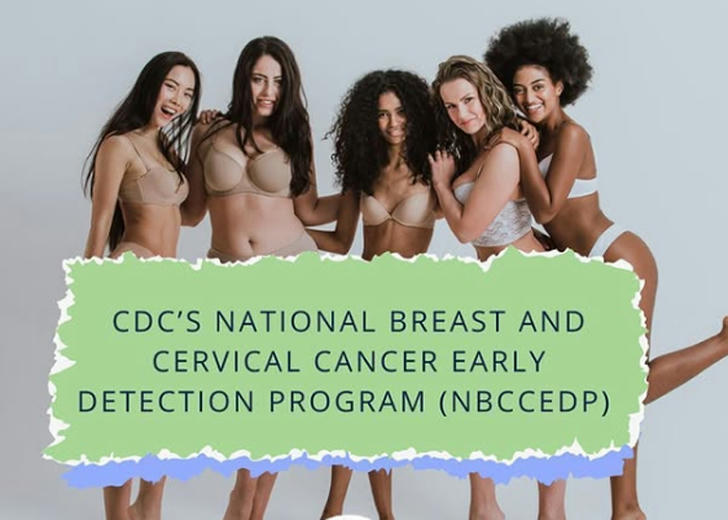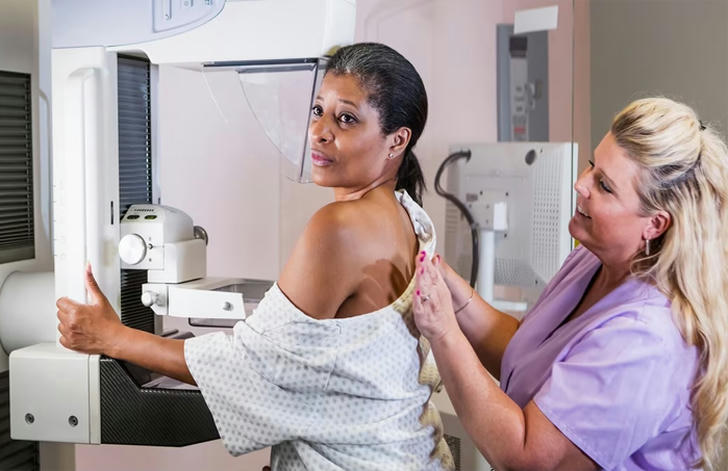Free Screening: National Breast and Cervical Cancer Early Detection Program
Breast and cervical cancer are among the most common cancers affecting women, but the good news is that early detection can save lives. Catching these cancers early can significantly lower death rates and improve treatment outcomes. To help more women access lifesaving screenings, the U.S. Department of Health and Human Services (HHS) created the National Breast and Cervical Cancer Early Detection Program (NBCCEDP). This program provides free screening services for low-income, uninsured, and underserved women, ensuring that no one is left behind when it comes to their health.

1. Program Services
The National Breast and Cervical Cancer Early Detection Program (NBCCEDP) offers essential health services to help women detect cancer early. Here’s what the program offers:
• Free Breast Cancer Screenings
Mammograms: Detect early signs of breast cancer with advanced imaging.
Clinical Breast Exams: Performed by trained healthcare providers to check for lumps or abnormalities.
• Free Cervical Cancer Screenings
Pap Tests: Identify abnormal cells in the cervix that could lead to cancer.
HPV Testing: Detect the human papillomavirus, a major cause of cervical cancer.
• Target Audience
Women aged 40-64 years are the primary focus of the program.
Eligible participants include low-income, uninsured, or underinsured women who meet specific financial criteria.
• Service Coverage
The program is available in all 50 states, Washington D.C., and numerous tribal organizations, ensuring broad accessibility.
• Follow-Up Support
If screenings detect cancer or precancerous conditions, the program provides referrals for low-cost or free treatment options, giving patients the care they need without financial burden.
2. How to Participate and Apply
Getting involved in the National Breast and Cervical Cancer Early Detection Program (NBCCEDP) is simple and accessible. Here’s how eligible women can apply and participate:
• Eligibility and Application Process
Women who meet the program’s criteria, such as being low-income, uninsured, or underinsured, can apply through their state’s public health department or partnering organizations.
Applicants will need to provide proof of income and insurance status to confirm eligibility for the free screening services.
• Ways to Participate
Visit the official program website to locate screening facilities in your area. The site offers easy tools to search for local clinics and service providers.
Contact local healthcare providers or call the program’s official hotline for guidance on scheduling an appointment. They can help you navigate the process and ensure you receive timely care.
The NBCCEDP is designed to make cancer screening services easily available for women who need them most. By following these steps, eligible women can take an important step toward protecting their health.
3. Impact and Success Stories
The National Breast and Cervical Cancer Early Detection Program (NBCCEDP) has made a tremendous impact since its launch in 1991. Over the years, it has provided screening services to more than 5 million women, helping to diagnose and treat thousands of cases of breast and cervical cancer.
One powerful example is the story of Maria, a 52-year-old woman from a low-income community. Maria had never had a mammogram because she couldn’t afford it and lacked insurance. Through the NBCCEDP, she received a free screening, which detected early-stage breast cancer. Thanks to the program’s referral services, Maria was connected to affordable treatment and is now cancer-free. She often says the program saved her life.
Stories like Maria’s highlight the importance of this program. By reaching women who might otherwise go without care, the NBCCEDP not only saves lives but also offers hope to countless families. The program’s success proves the value of accessible healthcare for underserved communities.

4. Benefits of the Program
• Promoting Health Equity
The program ensures that women from underserved communities can access essential healthcare services.
Many low-income, uninsured, or underinsured women would not otherwise be able to afford cancer screenings. By providing these services for free, the program removes financial and social barriers to care.
• Improving Early Detection
Early detection is key to successful treatment and better outcomes. The program significantly increases the chances of catching breast and cervical cancer at an early stage.
By identifying cancer early, the program helps reduce the number of advanced cases that are harder to treat and more likely to result in complications.
• Reducing Public Healthcare Costs
Treating cancer at an early stage is much less expensive than managing advanced-stage disease.
By preventing late-stage diagnoses, the program helps lower overall healthcare costs for individuals and public health systems, saving valuable resources in the long term.
5. Conclusion
The National Breast and Cervical Cancer Early Detection Program (NBCCEDP) is not just a lifeline for women—it is a vital tool in the fight against cancer. Early detection can make all the difference, saving lives and improving treatment outcomes. It’s crucial that women take the necessary steps to protect their health by participating in these free screenings. Don’t wait for symptoms to appear—take action now and prioritize your health. The sooner cancer is detected, the better the chances for successful treatment. Everyone is encouraged to spread the word about this life-saving program and ensure that all eligible women get screened today. Your health is too important to wait!
Official Resources
• National Breast and Cervical Cancer Early Detection Program Official Website
Visit the official website for detailed information about the program, eligibility criteria, and how to access screenings: https://www.cdc.gov/cancer/nbccedp
• State Public Health Department Contacts
To find local contact information for state public health departments, visit the CDC's website or use the directory link on the NBCCEDP page to connect with your state's health services: State Health Departments Directory
